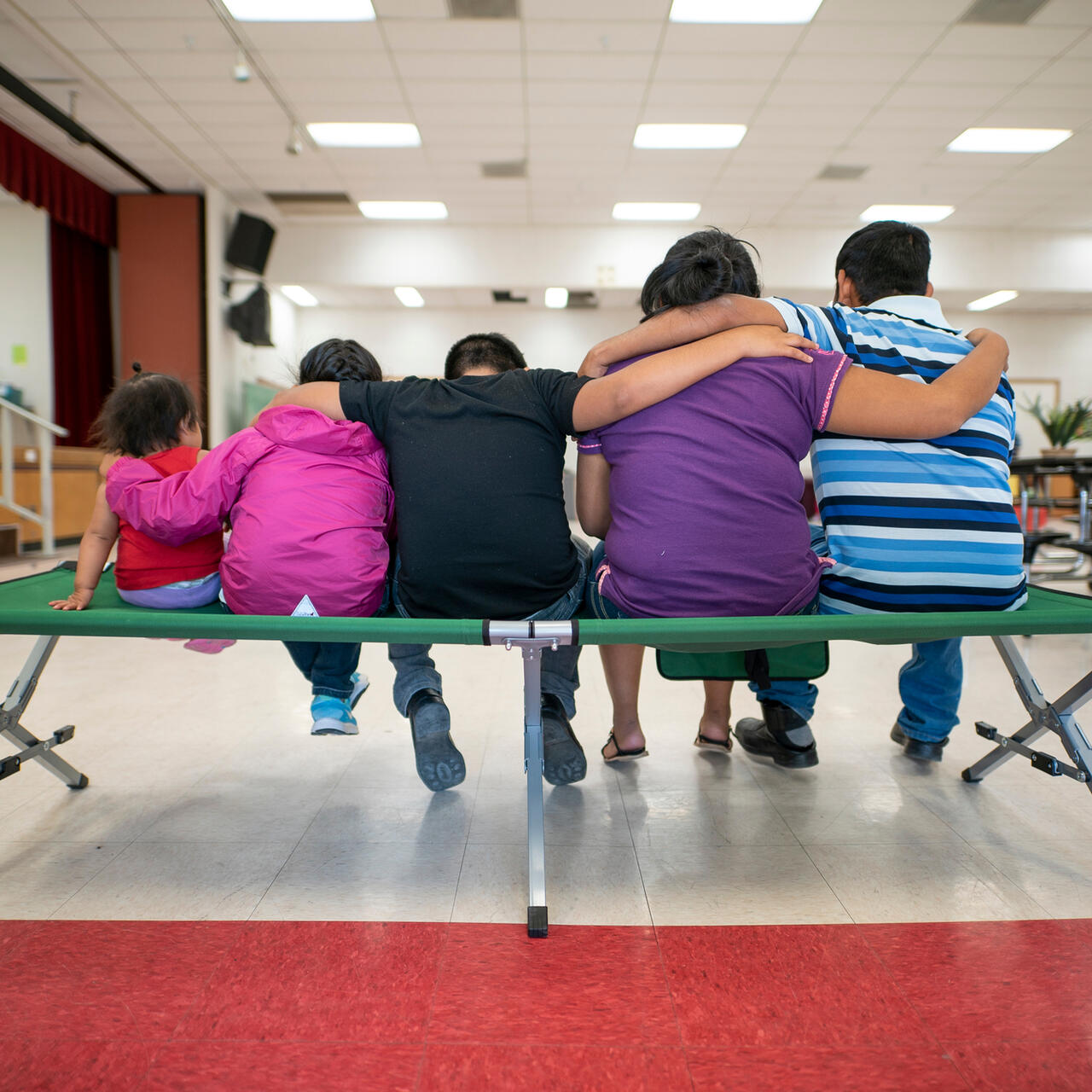
Asylum seekers who arrive at the United States southern border have fled their homes in search of safety, escaping conflict and violence. Seeking asylum is legal and a human right, long recognized in both U.S. and international law.
The Biden administration's June 2024 executive order and subsequent September 30th amendment, in addition to the “Asylum Ban” rule of May 2023, run contrary to American laws and values. Upholding the legal right to seek asylum does not mean every person seeking asylum will be allowed to remain in the U.S. but these policies do rob many asylum seekers of a fair chance to present their case to an immigration judge.
The U.S. government should reverse course and implement an orderly, humane and fair asylum process that protects people seeking safety and supports the communities across the country welcoming them.
Which border policies implemented by former President Trump did the Biden administration overturn?
The Biden administration has reversed some of the most restrictive border policies enacted during the Trump administration which curtailed the right to seek asylum.
This includes ending President Trump’s Migrant Protection Protocols, better known as the “Remain in Mexico” program, that forced asylum seekers to wait in highly dangerous conditions in Mexico for their asylum claims to be adjudicated. By the end of the Trump administration, however, Remain in Mexico was rarely being used as it had been supplanted by Title 42.
Although the Biden administration initially kept the pandemic-era Title 42 policy in place, using it millions of times to expel asylum seekers at the border without giving them a chance to request protection, in May 2023 the Center for Disease Control declared the COVID emergency over, ending the policy. However, in its place, the administration implemented an “Asylum Ban”.
What is the asylum ban?
In May 2023, the Biden administration adopted an “Asylum Ban” that bars people from asylum protection if they cross through another country on their way to the southern U.S. border, unless they previously applied for (and were denied) asylum elsewhere, or managed to make an appointment through the CBP One App.
The “Asylum Ban” remains in place despite an initially successful legal challenge.
Most asylum seekers travel to the U.S. through Mexico, which is already one of the largest recipients of asylum applications. Although a viable country for some asylum seekers, the country faces record levels of violence and is not a safe place for many.
“A rule that denies people arriving at our borders asylum protection is antithetical to America’s nonpartisan spirit of welcome for refugees in need,” says Kennji Kizuka, asylum policy director at the IRC.
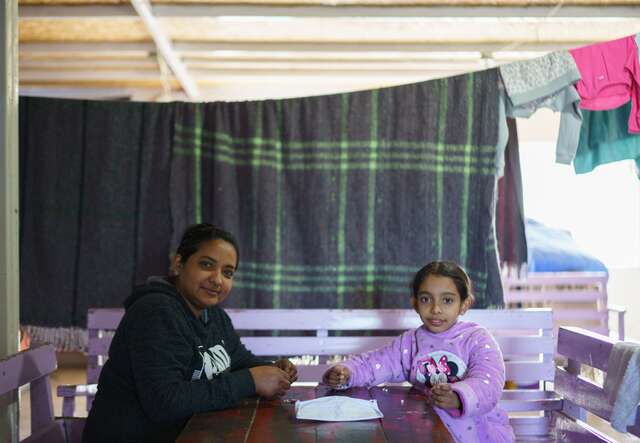
President Biden’s executive order further limits asylum access at the southern border
On June 4, 2024, President Biden issued a proclamation that temporarily suspends the right to asylum for people who arrive at the southern border away from an official port of entry or at a port of entry without a CBP One appointment. An update to this measure was announced on September 30, 2024, tightening asylum restrictions even further.
Asylum seekers subject to the rule can still try to apply for more limited protections from removal but the executive actions make this more difficult and leaves them in legal limbo, without a path to permanent residence or the opportunity to reunify with family members left behind in their home country.
With the executive order in place, the right to seek asylum will be suspended until the average number of daily southern border encounters drops below 1,500 for 28 consecutive days, an increase from the previous 7-day requirement. Daily southern border encounters have not consistently fallen below 1,500 since 2020, during the COVID-19 pandemic.
Encounters don't include people who arrive at a port of entry. However, the updated order now includes unaccompanied children in the calculation for daily encounter averages even though they will remain exempt from the suspension and related measures.
This order is harmful, counterproductive and illegal. The IRC urges the Biden administration to reconsider actions that restrict asylum access and violate U.S. refugee protection standards.
“America's asylum system needs upgrading to adapt to historic levels of global displacement and to address the humanitarian challenges host communities face,” explains Hans Van de Weerd, IRC’s Senior Vice President for Resettlement, Asylum and Integration.
Take action by calling on President Biden to protect the rights of asylum seekers.
What is the CBP One app?
CBP One is a U.S. government app for smartphones that offers limited appointment slots for people to request asylum at ports of entry. While the Biden administration has increased processing at ports of entry, many people seeking safety face months-long waits to secure an appointment. The app is available in only three languages. Given these limitations, people who don’t speak the relevant languages, have disabilities or lack smartphones may struggle to access the app and exercise their legal right to seek safety.
The IRC welcomes the U.S. government’s decision in August 2024 to allow asylum seekers to make CBP One app appointments from the Mexican states of Tabasco and Chiapas. However, the daily number of CBP One appointments should be expanded and processing capacity at ports of entry increased to provide asylum access while restrictive policies in the U.S. continue to limit refugee protections.
“We go on the application to see if we can get an appointment but it is not working," said Natalia, 22, whose family were forced to flee their home in Honduras. "We got the date, time, but the information cannot be submitted. We are stressed, with headaches."
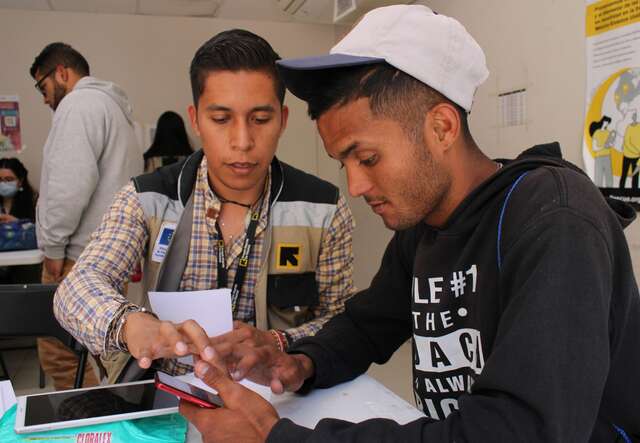
What can President Biden do to uphold asylum rights?
The IRC urges the Biden administration to rescind the “Asylum Ban” and the June 2024 Executive Action and its September 30th amendment, which have suspended asylum access at the border. These actions further weaken refugee protection standards and send a counterproductive message to other countries hosting people seeking safety that refugees can be turned away at will.
The U.S. should recommit to its long-held values of providing refuge for people fleeing violence and persecution while expanding safe pathways to protection that can alleviate pressure at the southern border.
We are also calling on Congress to pass the Destination Reception Assistance Act, which would provide financial support to border and interior communities welcoming new arrivals. The administration and congressional leadership should strive towards building a fair and timely asylum process that considers the magnitude of the global displacement crisis.
Are deterrence policies effective at stopping people from seeking safety?
As people are forced from their homes due to conflict and persecution in search of safety, some countries have responded by adopting policies that try to dissuade people from coming to their borders. These policies consistently fail to deliver on their intended effects. Evidence shows that these policies, including U.S. attempts to deter asylum seekers, have not stopped people from arriving or applying for asylum.
For example, average monthly crossings of the U.S. southern border in the six months after the “Asylum Ban” was adopted were virtually the same as the average crossings in the same period before the rule took effect.
Policies initiated during the Trump administration like the Title 42 expulsion policy and “Remain in Mexico” similarly did not reduce migration nor improve ‘order’ at the border. Instead, they resulted in people repeatedly crossing the border to seek safety.
Learn more about the border policies that have severely limited the right to seek asylum in the U.S. since 2017.
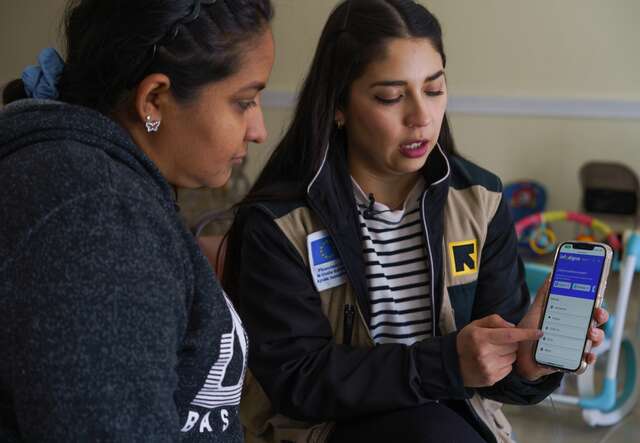
What happens to people turned away at the U.S.-Mexico border?
U.S. attempts to deter asylum seekers do not reduce the number of people in need of protection. Instead, deterrence policies force asylum seekers into dangerous situations in Mexico, where individuals wait—sometimes for years—to apply for asylum in the U.S.
Confronted with impossible choices, others are pushed to make dangerous, irregular crossings of the Rio Grande River and harsh desert terrain, often guided by criminals who exploit them and take advantage of the confusion and desperation caused by new U.S. policy restrictions.
Lincy was one of many asylum seekers blocked from protection and stranded in Mexico due to the Title 42 policy.
“My process to reach the United States was approximately seven or eight months,” says Lincy, who had endured abuse, violence and persecution in Honduras for being transgender. She originally planned to settle in Mexico, where her brother and sister-in-law live, but she never felt safe in Ciudad Juárez, where vulnerable women are at risk of being kidnapped, raped and murdered.
“I left my country with 4,000 lempiras, which is like 200 dollars,” says Lincy. “There were places where we had to walk day and night. It was a terrifying experience, but necessary.”

Further strain is placed on Mexico's asylum system
Mexico is one of the largest recipients of asylum applications in the world. In 2023, the country received an unprecedented 140,000 asylum applications. The continuation of restrictive policies implemented at the U.S.-Mexico border is further straining Mexico’s still-developing asylum infrastructure to fulfill growing humanitarian needs.
At the same time, Mexico is not always a safe option for all. Families and individuals find themselves at risk of murder, rape, extortion and other violence.
While Title 42 was in effect during the Biden administration, there were at least 13,000 reported cases of murder, torture, kidnapping, rape and other violent attacks against people returned to Mexico under this policy.
“Here in Tijuana, we’re in exactly the same conditions that people are fleeing from, everything from cartels and violence to gang presence,” says Kathy Kruger, who worked for IRC-partner Casa del Migrante in Tijuana, Mexico. Local shelters and organizations like hers have made heroic efforts to help asylum seekers despite strained resources.
“As Mexico receives historic numbers of new asylum claims and the U.S. continues to implement policies that push asylum seekers back into Mexico, humanitarian infrastructure in the country is increasingly strained and more people are stuck in highly vulnerable situations,” adds IRC’s Mexico country director, Rafael Velásquez.
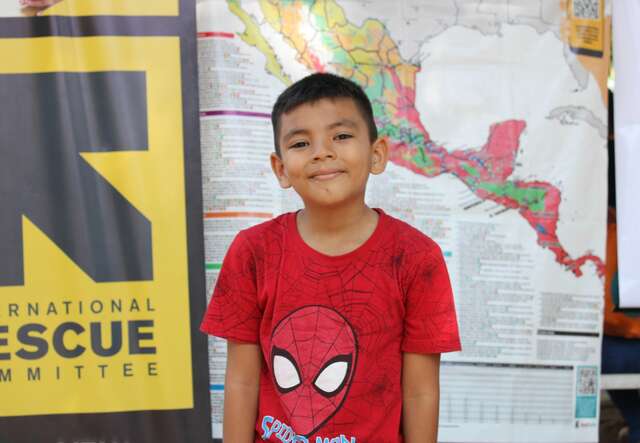
How does the IRC help asylum seekers who have arrived in the U.S.?
With over 120 million people displaced worldwide, the need for humanitarian assistance is at a record high. Incongruously, countries with fewer resources face the brunt of welcoming the world’s displaced.
The International Rescue Committee (IRC) works to support displaced people across the Americas by providing humanitarian reception, information services, legal advice, and supporting the social integration of new arrivals.
At our Phoenix Welcome Center, we work with local partners to provide food, water and clothing, basic medical assistance and referrals to hospitals, legal counseling, as well as child-friendly spaces, hygiene supplies, hot showers and overnight shelter.
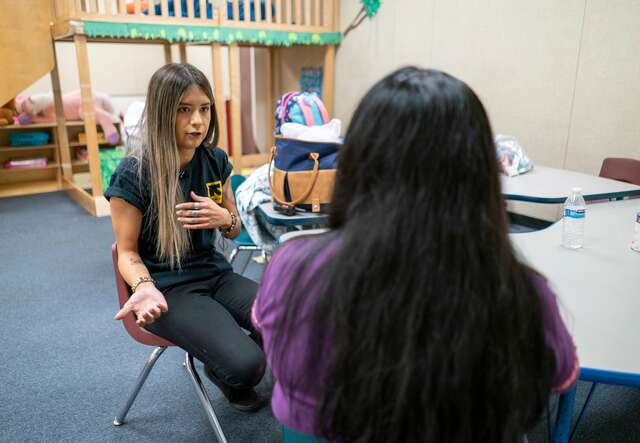
Marta fled southern Mexico with her husband, Julio, and three young children—10-year-old Miguel, 7-year-old Maria, and 1-year-old Luna—after she received anonymous death threats stemming from the growing gang violence in their community.
“I did it for my children’s safety,” she says. “I was so scared, I had no choice.”
“The IRC helped us get in touch with the people we know [in the U.S.], new clothes and shoes for the children, warmer coats...so many things,” says Marta. “It was overwhelming and it really meant so much to us. We are so thankful."
The IRC has also launched critical information services for asylum seekers and vulnerable communities. ImportaMi serves unaccompanied children who recently arrived in the U.S.
In other parts of the Americas: InfoPa’lante in Colombia, CuéntaNos in northern Central America and InfoDigna in Mexico are part of our global Signpost project with partners including Mercy Corps, Google, Microsoft, Twilio, Cisco, Tripadvisor and Box. The digital platform includes an interactive map that connects asylum seekers and other displaced people to local shelters, health care providers and other services.
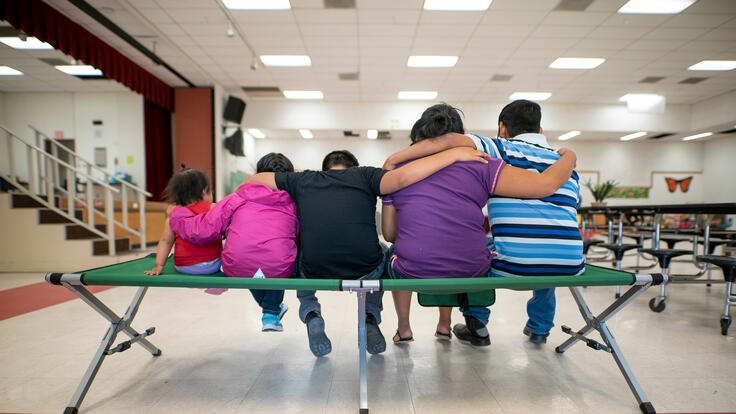
How can I help asylum seekers in the U.S.?
Take action.Write to the White House today to ask the Biden administration to rescind the asylum ban and latest executive action on the border, and uphold its legal obligations to welcome and protect asylum seekers.
Buy an item from an IRC office's Amazon wishlist. The IRC in Arizona's Phoenix Welcome Center helps parents and children seeking refuge in the United States to find safety and stability as they await their asylum hearings.
Donate to the IRC. The IRC provides critical support to asylum seekers on both sides of the U.S. southern border, including the IRC’s Asylum and Crossborder programs, which served nearly 50,000 people in need of protection in the U.S., with a warm welcome, case management and emergency assistance in fiscal year 2023 alone. In Latin America, the IRC serves individuals and families who are at risk of violence and displacement in northern Central America and along the main migration corridors in Mexico, from the southern to the northern borders. We deliver a variety of services across the region, including preventing and responding to gender-based violence, safe spaces for women and girls, economic recovery and development services, case management, psychosocial support and health care through our emergency mobile medical unit.
Learn more about what happens once asylum seekers arrive in the U.S.
*Pseudonym used for privacy



